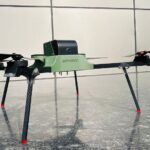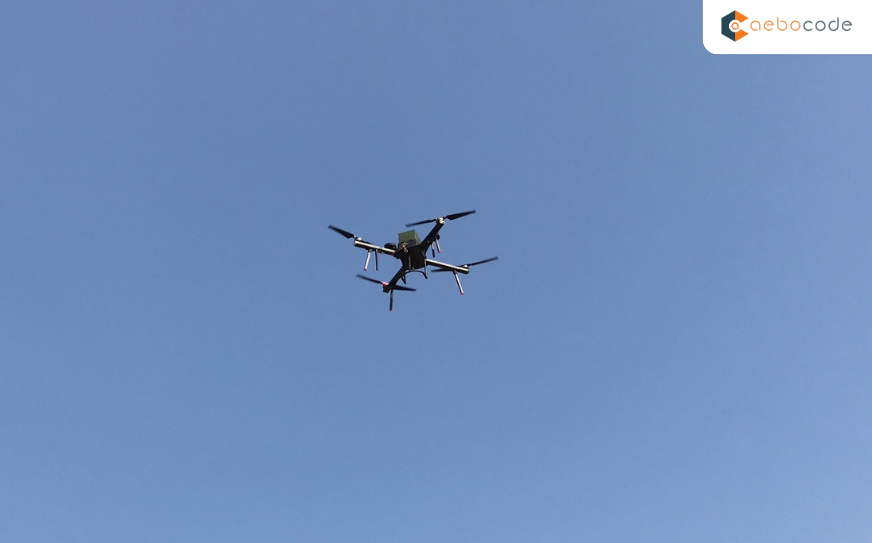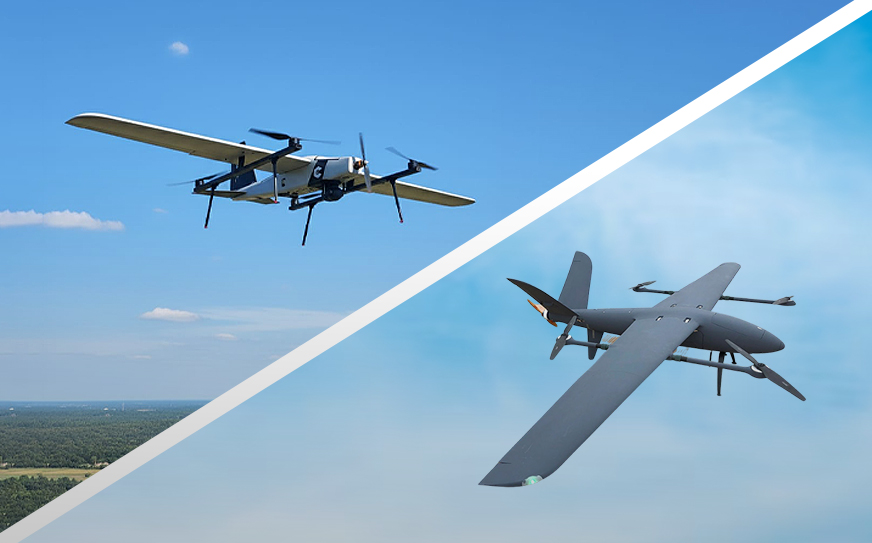
Kids Drone Kits: What’s Inside the Box & How It Operates
May 29, 2025
AI-Powered Drones: The Future of Autonomous Warfare
June 3, 2025Swarm Drones: Technology, Tactics, and Future Threats
Drone technology has transformed the world of modern war, surveillance, and security missions. One of the most revolutionary innovations is the development of Swarm Drones — a group of autonomous or semi-autonomous drones operating in tandem with a shared purpose. With the growing capabilities of such systems, naturally, strategic, tactical, and ethical issues surrounding their employment also arise.
Here in this blog post, we discuss the technology of swarm drones, their tactical benefits, current applications in the real world, and the increasing number of future threats and challenges they pose.
What Are Swarm Drones?
They are a group of unmanned aerial vehicles (UAVs) that operate collectively under a coordinated system based on algorithms, real-time data exchange, and artificial intelligence (AI). Swarm drones move in coordinated patterns, much like a flock of birds or a school of fish swimming in unison; consequently, they function as a single, intelligent collective.
The defining strength of drone swarms is decentralization. Unlike conventional UAV missions that rely on a single ground station or operator, swarm drones independently adapt to changing situations, distribute tasks among themselves, and complete their mission even if some drones are destroyed or lost. Consequently, this ability to coordinate with one another is the reason why they are particularly effective in dynamic and adversarial environments.
Also read : Drone Parts Guide 2025
The Technology Behind Swarm Drones
The swarm drone architecture includes the integration of a variety of advanced technologies:
1. Artificial Intelligence (AI) & Machine Learning
AI algorithms govern the behavior of swarms, thereby allowing drones to learn not only from their environment but also, importantly, from each other, which significantly enhances their adaptability and coordination. Through the assistance of machine learning, the drones can identify targets, spot obstacles, and make decisions on the fly without any interference.
2. Edge Computing
Edge computing enables swarm drones to perform processing locally, reducing latency and enabling real-time response. This is critical in high-speed missions where data central processing might delay decisions.
3. Communication Networks
Communication is at the heart of swarm behavior. Drones have to share positional data, environmental feedback, and mission parameters in milliseconds. Technologies like mesh networking, 5G, and radio-frequency coordination collectively enable the swarm to operate as a single, unified entity.
4. Sensor Fusion
Each drone in a swarm is equipped with onboard sensors such as GPS, infrared, LIDAR, cameras, and occasionally radar; consequently, these technologies enable them to navigate accurately and operate effectively in diverse environments. Merging these data streams — sensor fusion — enables drones to obtain a complete perspective of what’s occurring around them and pass the information throughout the swarm.
Also read : Kamikaze Drones
Tactical Advantages of Swarm Drones
They have various tactical advantages over conventional single-drone systems, which make them uniquely desirable for military and disaster relief uses:
1. Redundancy and Resilience
In a swarm, the mission continues even if one or several drones are destroyed or fail. Moreover, the remaining drones compensate for the lost units, thereby ensuring mission continuation and making the system more resilient than single-drone operations.
2. Rapid Deployment
They are also simple to deploy and cover vast distances within minutes. Swarm drones disperse and regroup efficiently, giving them a significant edge in reconnaissance and search-and-rescue missions across challenging environments.
3. Multipurpose Coordination
Operators program swarm drones for tasks like recon, jamming, targeting, or payload drops, with dynamic role-switching based on mission needs.
4. Penetration and Overwhelm
On the battlefield, swarms can overwhelm hostile air defense systems. A large number of these drones can overwhelm defenses and radar, allowing critical units to complete high-value missions successfully.
Real-World Applications
Once a science fiction concept, swarm drones are now actively developed and tested by governments and industries for real-world applications.
Military Applications: The US, China, Israel, and India are spending big on swarm drone technology. They are designed to be employed for reconnaissance, electronic warfare, and attack missions.
Disaster Relief: Swarm drones rapidly scout large, hostile areas after earthquakes or floods, aiding search-and-rescue efforts within minutes.
Agriculture: Coordination of this can be used for crop spraying, land monitoring, and large-scale agri surveying.
Urban Monitoring: Smart city swarm drones can observe traffic, maintain crowd control, and assist in public safety operations.
Aebocode Technologies drives practical applications of swarm drone technologies, enabling defense and security sectors to harness their full potential.
Also read : FPV Drone Kits
Upcoming Threats and Challenges
While the prospect of swarm drones is undeniably exciting, their arrival also, inevitably and consequently, introduces an entirely new universe of threats that we must carefully and seriously consider.
1. Autonomy vs. Accountability
As drones become more autonomous, it becomes increasingly difficult to allocate responsibility in the event of mistakes or unintentional destruction. If a swarm mistakenly targets something, then the question inevitably arises: who is to blame? Furthermore, accountability becomes increasingly complex due to the autonomous nature of these systems.
2. Cybersecurity Threats
Swarm drones require high-bandwidth data transfer and communications. This exposes them to hacking, spoofing, and other cyberwar threats. A hijacked swarm can be redirected against its original users.
3. Spillover to Non-State Actors
With more people having access to the technology, the likelihood of its use by terrorist groups or insurgency forces to coordinate attacks using swarm drones posing catastrophic impacts increases.
4. Ethical Issues
Moreover, the employment of swarm drones on the battlefield not only poses considerable ethical concerns regarding autonomous killing but also raises serious issues related to overreaching surveillance and, importantly, the safety of civilians’ lives. The international community is yet to agree on a general legal framework for their control, globally.
5. Logistical Complexity:
It is not an easy accomplishment to deploy and operate swarm drones. They need advanced infrastructure, expert operators, and a thoroughly ingrained AI core — expensive and technology-intensive.
The Road Ahead: Aebocode’s Vision
Aebocode Technologies firmly believes that swarm drones are not just a tactical advantage; moreover, they truly represent a groundbreaking revolution in the future of unmanned systems, fundamentally transforming defense and security landscapes. Our goal is to create secure, smart, and ethically correct swarm drone solutions for defense, security, and humanitarian missions.
Indeed, swarm drones are no longer just a future dream; rather, they have become an evolving reality. From revolutionizing border protection to redesigning disaster relief, their potential is irrefutable. However, as with any dominant technology, their application inevitably requires responsibility, clear vision, and close cooperation among industries, governments, and communities.






